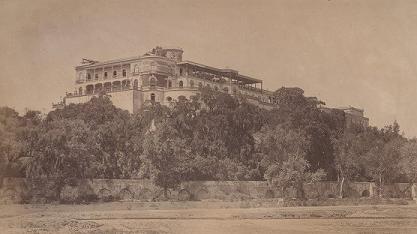Chapter 3. Using archival documents in the Spanish classroom
Introduction
The Our Americas Archive Partnership offers many archival documents in Spanish that can be used in the Spanish language or literature classroom. All the documents in the collection include transcriptions and those in Rice University’s and Instituto Mora’s online collections offer digital page images as well. They are all freely accessible to teachers and students alike.
This module seeks to outline ways in which these historical texts can be incorporated into the classroom as parts of lessons, lectures, homework assignments, presentations, and special projects.
Why use archival materials?
These historical documents can bring authentic material and culture into the classroom. They offer new ways of contextualizing culture, history, language, and literature and give human voices to elusive historical events. They also provide exciting visual elements for presentations!
What types of documents can I use in the classroom?
The Our Americas Archive Partnership hosts many documents that can be used in the Spanish classroom, such as:
Using archival documents in the classroom
Some lesson plans and activities have already been created to show how documents can be incorporated into the Spanish language and literature curriculum (see links in right-hand sidebar). These modules are geared toward the high school AP Spanish and college-level classrooms.
Instructors can use these historical documents, in whole or in part, as reading passages for their students. They can serve as springboards for discussions on culture or history or to assess reading comprehension. An example of such an activity is the lesson plan based on an excerpt from the book, Historia moral de las mujeres: “Historia de Xochitl”: A Cultural Spanish reading passage". Such excerpts can be combined with custom glossaries or vocabulary lists made by the instructor or the by students themselves as a classroom or homework assignment (an example of a glossary/vocabulary list can be found here: Vocabulary list: "Historia de Xochitl").
Instructors can also combine archival material with canonical texts to contextualize the historic moment. An example of such a combination is the module Spanish Class Lesson Plan: Jose Marti's poems and letter. Other examples include using letters from the Texas Revolution (in Spanish); essay excerpts from the Spanish colonial period, such as Ensayo sobre la reducción y colonización de las tribus bárbaras del continente or Papeles sobre la reduccion del Seno Mexicano, y Sierra gorda; historical maps; newspapers/gazettes, such as Gaceta del Gobierno Supremo de Guatemala and others; books; currency; etc.
Instructors and students can work with transcriptions or the actual page images, which give a unique perspective of history, especially when dealing with handwritten documents. For supplemental material on reading archival documents, please see the following modules: Glossary of common colonial Spanish terms and phrases and Abreviaturas históricas (Historical Spanish Abbreviations). They are located in both the Spanish literature and Spanish language course collections in the "Links" sidebar.
Assignment examples
Identifying verb tenses
Creating glossaries for excerpts
Essay projects (students can write their own letters/postcards set during a historical time period, write travel journals, write autobiographies/biographies, etc.)
Create a timeline based on a document (such as Cabeza de Vaca's Relación)
Create maps with labels
Create presentations using archival documents and/or images
Write a newspaper article about a historical event
Create an entire newspaper in a group based on historical events
Create Connexions modules using archival sources, which can be put together by the instructor in a "course" or collection (See Help: Modules and Collections).
How do I find documents?
Instructors can find documents on the Our Americas Archive Partnership site by typing in search terms or using Americas Concepts (hemispheric-themed key terms) or Community Tags (tags assigned by users). We suggest using thematic search terms that deal with the unit or lesson area (such as colonialism, missions, conquest, Texas, etc.).





